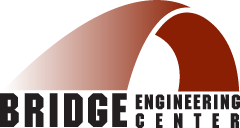Project Details
12/15/06
12/14/07
National Academy of Sciences
National Cooperative Highway Research Program (NCHRP)
Researchers
Michael LaViolette
About the research
Bridge construction over deep valleys, water crossings with steep slopes, or environmentally protected regions can offer many challenges. The incremental launching method (ILM) for bridge construction may offer advantages over conventional construction, including creating minimal disturbance to surroundings, providing a more concentrated work area for superstructure assembly, and possibly increased worker safety given the improved erection environment. The ILM involves assembly of the bridge superstructure on one side of an obstacle to be crossed, and then movement (or launching) of the superstructure longitudinally into its final position. Despite potential advantages for certain situations, the use of the ILM for bridge construction has been very limited in the United States. The objective of the work was to provide bridge owners, designers, and contractors with information about the ILM, including applications, limitations and benefits.
To clarify the ILM procedure and the current state of practice, a comprehensive literature search and survey were conducted. Recommendations pertaining to best practices for planning, design, and construction activities, as well as applications and limitations for the ILM are also provided. Case studies are presented, which provide specific ILM bridge project information. The use of the ILM for bridge construction will never be the most efficient way to construct every single bridge. However, it is thought that a wider understanding of the applicability and potential benefits would allow potential owners, designers, and contractors to make well-informed decisions as to its use for their upcoming projects.
View the NCHRP project page for more information
